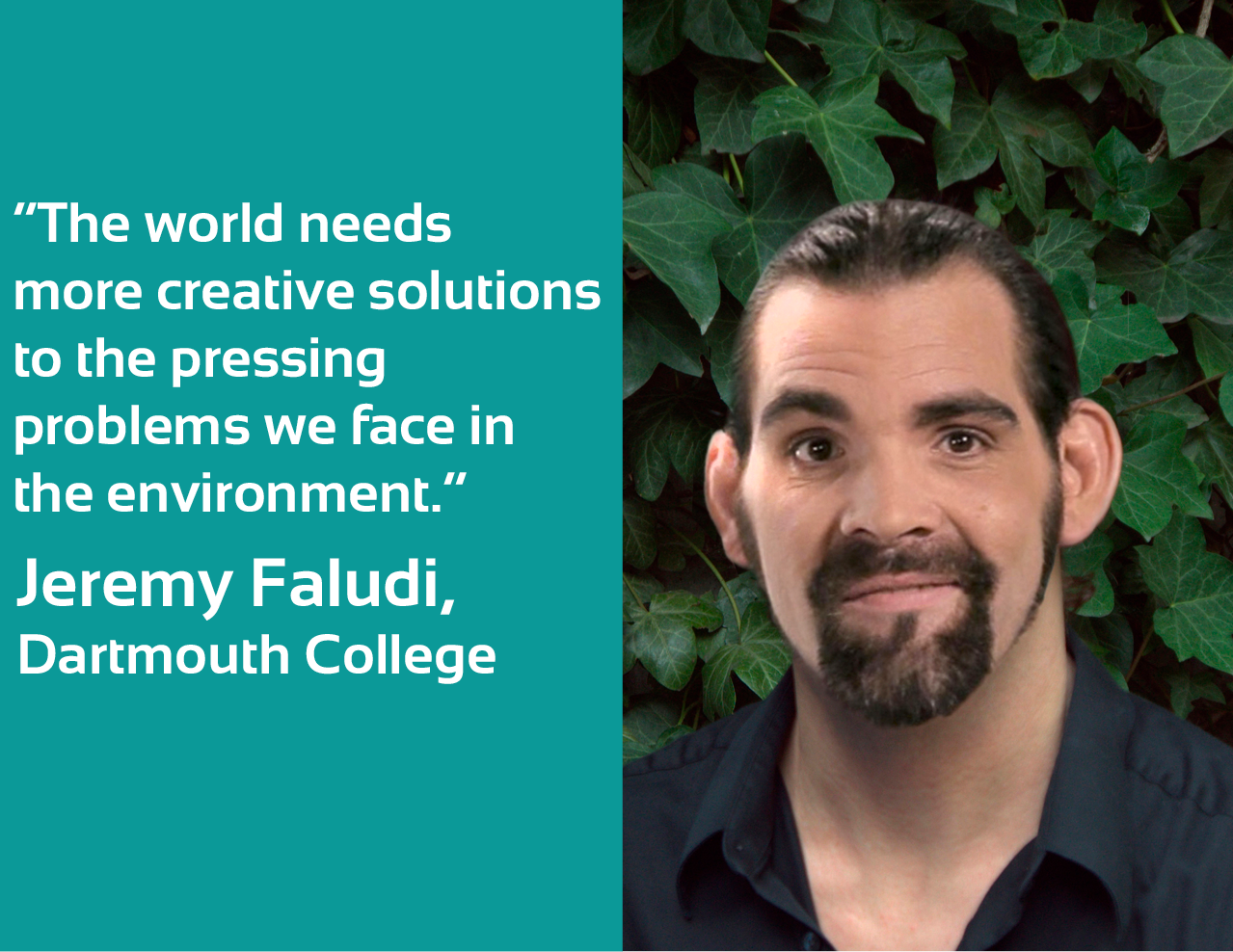
We continue our series highlighting educators within the VentureWell network who are doing good work—faculty members who are challenging norms in higher education and inspiring students to impact the world through invention.
This month’s faculty spotlight is Jeremy Faludi, Assistant Professor of Engineering at Thayer School of Engineering at Dartmouth College. A sustainable design strategist, he has contributed to six books on sustainable design, including Worldchanging: A User’s Guide for the 21st Century. He also co-authored the Autodesk Sustainability Workshop, and created Tools for Design and Sustainability, an online guide to help designers, inventors, and startup founders understand and apply sustainable design methods. Faludi led the OPEN 2018 workshop, Inventing Green: A Tool for Integrating Green Invention in Design and Engineering Curriculum.
How did you get interested in teaching entrepreneurship?
I actually teach sustainable design, but I think entrepreneurship is vital to my work. Many important design decisions are actually not made not by designers; they’re made by business people with the final say on a product’s design and function. We need more designers to start green companies as well as company founders to understand sustainability and design concepts so they can make better strategic business decisions.
What is your favorite thing about teaching?
I enjoy many aspects of teaching. One is the joy of watching people grow, helping them achieve things they didn’t think were possible when they arrived to class on the first day. Teaching is also one of the few jobs where it’s good – and necessary – to be both analytical and creative at the same time. I also like to incorporate a sense of play when leading projects. Not only is it fun, but play encourages students to explore and be creative when making things.
Where would you like to see the field of entrepreneurship in five years?
I’d like to see the entrepreneurship field recognize the potential for innovation and profit in sustainable design. The world doesn’t need more cheap plastic stuff that gets thrown away six months later, and it doesn’t need another app that commodifies human interactions. The world needs more creative solutions to the pressing problems we face in the environment. There are many ways to make money while doing good. The more people do it, the easier it gets, and the more it becomes business as usual.
What traits make for great teachers, advisors, and mentors?
All students have different learning styles. It’s important to have excellent communication skills in different areas. In my classroom, I try to find ways to help students physically embody the concepts they’re learning by building things. That allows them to connect big-picture visions of what’s important with the concrete details of execution. I also think effective educators possess some level of emotional intelligence, which is particularly useful when it comes to mentoring students.
What books on entrepreneurship and innovation have you been reading lately?
Most of my innovation reading lately is academic journal articles, so instead, I’ll refer you to a classic book on sustainable innovation for business: Natural Capitalism: Creating the Next Industrial Revolution, by Paul Hawken, Amory Lovins, and Hunter Lovins. This book is valuable for its explanation of how design and engineering for environmental benefit can also drive profit and risk reduction and other business goals. It’s also full of countless real-life examples of radical improvements that show these things are possible.
What’s your most useful classroom activity or assignment?
I just spent a few months helping VentureWell build a new area of their website, “Tools for Design and Sustainability“, which has eleven of my classroom assignments rewritten for inventor-entrepreneurs to apply on their inventions. Probably the most useful section is the Whole System Mapping design method – at least, it’s what’s been used by many other teachers around the world. It’s a way of both making people better at systems thinking in a very simple, visual way, and incorporating quantitative sustainability measurements (like life-cycle assessment) into the early-stage invention process.